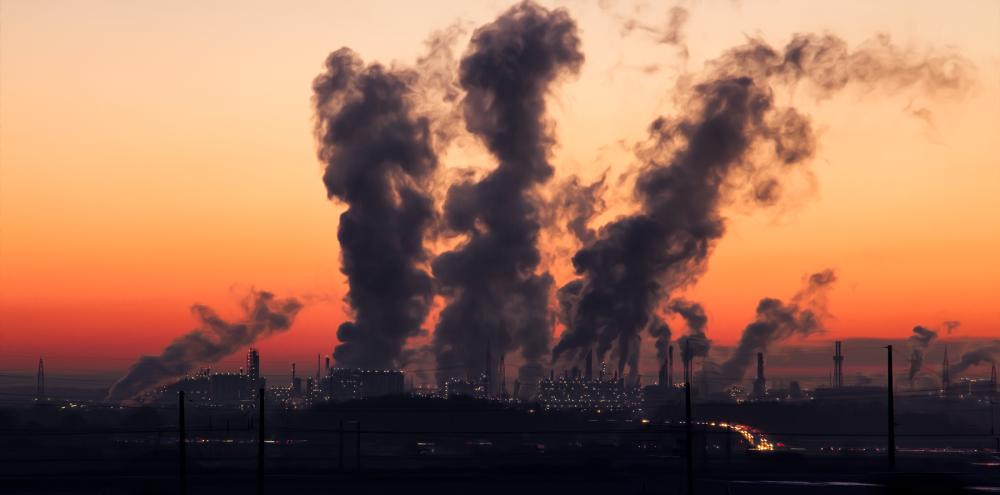"Reducing greenhouse gas emissions" is a phrase that is often mentioned worldwide because people have truly realized the dangers of global warming and the disasters that may be caused in the future.
Regrettably, however, while the phrase "reduce greenhouse gas emissions" has been shouted for years, the effect has not been satisfactory, and according to the 2021 data, the world's carbon dioxide emissions have not declined, but have also risen, with 1.75 billion tons in 2020 and 1.85 billion tons in 2021. Since the emission of greenhouse gases has not declined, the process of global warming has naturally not slowed down, but then again, unless human beings completely stop development, the trend of global warming will not be completely changed, so if you want to find a real way out for global warming, you must also hope for the development of science and technology.

Is there really no way for humans to reduce the concentration of carbon dioxide in the atmosphere?
Of course not, in fact, with existing technology, it is possible to recover and process carbon dioxide in the atmosphere, but the cost of doing so is very high, so it is difficult to implement it on a large scale. It can be seen that in order to reverse the trend of global warming, it is necessary to find a way to balance economic and environmental benefits, that is, to change the process of recovering carbon dioxide from consumption cost to value creation. In this context, some environmental protection technologies using carbon dioxide as raw materials for production have emerged, such as carbon dioxide synthetic starch technology, carbon dioxide conversion to plastic bottle technology, and carbon dioxide into gasoline technology. Carbon dioxide into gasoline, which sounds a bit mysterious, is it true? Of course.
Some people will think of the "water to oil" scam when they hear "carbon dioxide" into gasoline, in fact, the two are not the same thing at all, in fact, the technology of carbon dioxide to gasoline has long appeared, such as converting carbon dioxide into propane, butane chain, etc. The reason why most people do not know is because the conversion efficiency of related technologies has been too low, and there is no value of large-scale production at all.
But now the problem has improved, and researchers have invented a new catalyst that can greatly improve the efficiency of carbon dioxide into gasoline, and even increase the original efficiency by 1,000 times. What kind of catalyst is this? This new catalyst is based on the element ruthenium, which is probably unfamiliar to most people because it is a relatively rare metal.
Ruthenium is a hard and brittle polyvalent rare metal element, belonging to the platinum group of metals, in the platinum group metal, in addition to ruthenium, there is palladium and we are very familiar with platinum.
The reason why ruthenium is rare is because in the earth's crust, the content of ruthenium is less than one billionth, even if it is the same platinum group metal platinum and palladium are more than ruthenium, but fortunately, although ruthenium is rarer than platinum and palladium, the price is cheaper than platinum and palladium. For most people, ruthenium is unfamiliar, but its use is very extensive, because its melting point is as high as 2310 degrees Celsius, strong heat dissipation, chemical properties are very stable, and it has good resistance to acidic substances, even aqua regia and hydrofluoric acid are difficult to corrode. In fact, the first to use ruthenium metal as a catalyst to convert carbon dioxide was the team of Nobel prize winner George Euler, who converted carbon dioxide into methanol fuel at a rate of 79%.
This time the study is a new way for the elemental ruthenium evolution catalyst, this new catalyst can further accelerate the chemical reaction process, thereby improving the conversion efficiency, according to the experimental data, under the same conditions, the new catalyst to convert carbon dioxide efficiency is 1000 times that of the standard catalyst, of course, this is the experimental data at the maximum conversion pressure.
According to experimental data, after the efficiency is increased by 1000 times, this carbon dioxide to gasoline technology really has the value of application, if the cycle mechanism can be established, then the processing and conversion efficiency of carbon dioxide will be higher, such as carbon dioxide converted into fuel and then burned again to produce carbon dioxide, and the carbon dioxide produced again is directly collected for re-conversion, the efficiency will be higher, and the cost will be lower.
Does the increase in the efficiency of carbon dioxide to gasoline mean that the global warming trend will be reversed?
Don't be too happy too soon, because for now, it is still unrealistic to use it on a large scale. After the use of the new catalyst, the conversion efficiency of carbon dioxide is indeed improved, but this new catalyst still uses the element ruthenium as a carrier, and the price of ruthenium metal, although lower than platinum and palladium, is still very expensive and very rare, so it can only be used for experimental research, and large-scale application cannot be done. However, do not be discouraged, although the current research can not achieve large-scale application, but its value is to take the carbon dioxide conversion technology one step further.